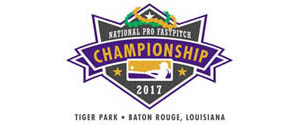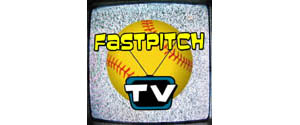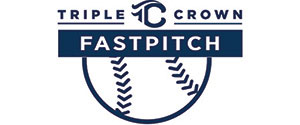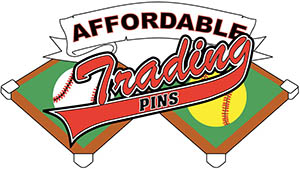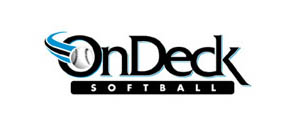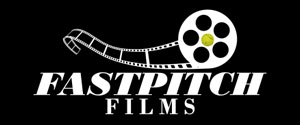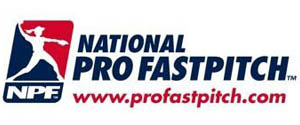NorCal
Hitting: tip & myth of the week
Anyone who hits the ball off the tee 300ft with one hand at age FIFTY, I am listening to and watching with the utmost respect. Thats what Steve Englishbey did when he came to Modesto a little over 4 yrs ago to work with about 10 HS kids, and we were lucky enough to be included, I will never forget those two 12 hour days that he spent at a local HS in Modesto. One of the most respected hitting guys I know from the Modesto area who happens to be a former Team USA Pan/AM games gold medalist got Steve to come and who truly feels that Steve is the best thing since slice bread, and this comes from a guy who was voted "ALL-World" by the ISF. So with that much respect and to see what he does with his swing, I have a feeling Sarge is right, Steve is the real deal, and has probably forgot more about hitting and how the body works, that most will ever know.
- rbi
- Premium Member

- Posts: 565
- Joined: Mon Mar 24, 2008 12:30 pm
Sarge,
Love the post on the dd at college. Man if that story doesn't ring true
Especially the days where nothing seems to go right and I'm flippin' the bat to the outfield in disgust (I have always been tough on her and a bit angry)
Then the next day all is well.
Love the post on the dd at college. Man if that story doesn't ring true
Especially the days where nothing seems to go right and I'm flippin' the bat to the outfield in disgust (I have always been tough on her and a bit angry)
Then the next day all is well.
- watchtonsofsoftball
- Posts: 349
- Joined: Tue May 25, 2010 6:31 pm
Greg:
I am having a hard time maintaining something which I prize very highly, and have worked for 10 years through about 20,000 posts on various internet forums to maintain - namely, at least a VENEER of civility. Some of your comments seem at the least to be offensively passive-aggressive, and probably incendiary. Particularly (but not exclusively) the comment about Englishbey.
You've made that clear, and I'd like to benefit from your knowledge. Because I DO find it complicated, and spend a good deal of time thinking about how to communicate it simply to hitting students in a way that engenders the proper movements.
Can you please post some before and after clips of some of your students - or point to where they are playing in college (in which case, I probably HAVE clips already) - and then indicate the non-complicated instruction you utilized to get them there?
The guy charges less for lessons and clinics than anyone else on the scene. I was involved with him when he did his first clinic ever, and it was in Northern California. He flew in from Texas, stayed for 9 days working with hitters 12 hours per day, EVERY day, and wanted to charge $500 for the whole thing. I felt guilty paying him $2,000, as that was what was in the budget. But the value delivered was worth a huge multiple of that. The guy charges as little as $25 for a lesson, and then sometimes works with a hitter for 4 hours. He takes phone calls from instructors, dads, and hitters at all hours of the day, and the calls usually end when the caller's cell phone battery dies. He is a friend of mine, and I have some bias, obviously. But I also have some insight into his financial situation. He makes peanuts.
And while his material intended for instructors is INCREDIBLY rich, technical, and detailed, his language with kids seldom uses words of more than 2 syllables. He prides himself on finding a way to express things to kids in language they understand. But it IS his highly-technical understanding of kineseology (he is a sports trainer), and hitting that makes this possible. He was a first round draft choice of the Astros that never made it past AAA. And he has spent 30 years since educating himself (IMO) in a quest to understand why not.
And he thinks the "why not" is that he LISTENED to crap like "see the ball, hit the ball) and other moronic bromides du jour instead of really understanding how to HIT.
Don Slaught says the same thing, and states unequivocally that he turned his MLB career around at about the 6-year mark byu really studying hitting. One of the VERY few MLB hitters who go decidedlty better as a hitter later in his career.
Englishbey educated himself, LITERALLY reads books on anatomy, kineseology, and bio-mechanics for basically recreation, and is immersed in hitting about 16 hours a day. And that is not an exaggeration. But a good part of that time is spent in trying to devise ways to communicate and demonstrate complex principles to kids in a way they will find helpful.
ANYONE who doesn't find hitting to be complicated, AND is getting results (by results I mean a continual pattern of improvement that leads ANY kid to success in high school and many kids to success in the upper echelons of Travel Ball and college), is either working only with incredibly gifted (999 percentile) athletes, is kidding themselves, or is so much better than every other instructor on the planet that mere comparison would be meaningless.
And since you have directed comments about complexity to ME, and are obviously implying the same here, let me AGAIN RE-iterate a concept I have stated which you either refuse to consider or don't understand:
An instructor HAS to understand some pretty complex things in ORDER TO make them simple for KIDS. Web forum comments are NOT indicative of the language I would use with a hitter. But I believe the language I DO use is highly accurate, even while being simple, because it is based on a decent - but very much growing - understanding of VERY complex principles.
But I again allow for the fact - and I am NOT setting a trap - that you understand things way better than I do and are using that understanding to obtain results. In which case, I want to learn from you. But I am skeptical, and again, would love to see some clips.
Why is it funny? If you had pointed it out on an earlier post, that would have been helpful. You didn't, so I did. That said, looking at the clips is one thing. Understanding how they differ - and knowing how to fix things without breaking other things - is extremely challenging for most of us.
Non sequitar. I am unaware of any contemporary portable NON-digital camera that records at ANY speed. The last major film processing plant in the world just closed it's doors. But the point in thje context of which it was made was that RVP has value because the clips of MLB and elite female hitters available with the software are filmed at 60fps. And hence are infinitely more valuable than clips filmed at 30fps, because there are twice as many video frames in the swing, and more to compare too. Those can sometimes be cquired from other places, but it is VERY difficult to get them from similar angles to make comparison more meaningful. BUT, if you CAN get 60fps clips, AND can record your own hitters at 60fps, than you can do great side-by-side comparisons using QuickTime. Can't mark up the clips graphically, which most find very helpful, but the comparison is pretty good.
That said, 90%+ of the video cameras that people currently own record video at 29.97 fps. RVP "captures" these 30fps video streams, tricks the de-interlace, and makes them playback at 60fps. Making comparison easier and more valuable.
Anyone can tell a kid to do something superficial (and understandable). That isn't the trick. Getting results is the trick. And it is VERY difficult to do with precise, simple language. And vital that instructors do so.
When you say something like "Keep the bat above the hands," as you did in an earlier post, I have no idea what that means to you, or to your hitters. I KNOW it isn't what elite hbitters do, EVER, under ANY circumstance, and it affects your credibility. It is simple language, and a simple concept, but it is the wrong concept. As ANYONE who actually looks at video knows, the bat is parallel to the swing plane by bat lag, and coming from below the hands - and the ball - at contact.
Simple is important, and we should all strive for it. It is NOT as important as being right, though.
"Do what works for you " is dangerous advice. Because what works with a talented and strong 12 YO will almost certainly NOT work against top Gold and college pitching. And by the time the 12 YO is 16-17, reprogramming the motor skills is EXTREMELY difficult. Bith because there are thousands of reps doing something else, and because the same part of the brain which controls motor skills controls language acquisition. And it is harder to program as someone ages., Which is why young kids learn languages very easily, but most struggle to learn them at a later age.
"Do what works for you" is something that sounds right, but is extremely dangerous. Pitchers get VERY good very fast. A lot of the reason is their improving pitching mechanics. A principle from which hitters are not exempt.
"Have fun" is great advice. For a lot of kids serious about the sport, fun is amplified by success. At the current level, and the next level.
"See the ball, hit the ball" IS good advice - for the live setting. NO hitter can afford to be thinking about mechanics when they are facing a live pitch. Golfers can't even do it most of the time, and their swing is pro-active, and against a stationary ball. As opposed to the anticipatory-reactive (different than just reactive) challenge a batter faces against a moving ball. So good advice.
It's not the advice I would use, becaue if the goal is to hit nthe ball, that is what the brain will attempt to accomplish. What I think is even better advice is "see the ball, hit the CRAP out of the ball." NOT semantics. Hitters trying to make contact are genrally not successful hitters aginst skilled pitching, and utilize very different mechanics than hitters trying to pulverize the ball. And maybe you understand this difference, and it is what you mean - again the impreciseness of language, and why complex terms are sometimes important to use when attempting to understand the swing at the instructional level.
Still, with that caveat, I agree with your advice here.
That said, "See the ball, hit the ball" is at BEST a bromide in the instructional setting. Certainly not worth the price of a lesson.
I'm going to check out on this thread, Greg. I don't have much to add, and my sense is that you aren't trying to track with what I am asking you to consider, but are instead merely looking for sentences or words with which you can disagree. A SIMPLE approach, but not a helpful one, IMO.
Best wishes to you, and to your students.
Scott
I am having a hard time maintaining something which I prize very highly, and have worked for 10 years through about 20,000 posts on various internet forums to maintain - namely, at least a VENEER of civility. Some of your comments seem at the least to be offensively passive-aggressive, and probably incendiary. Particularly (but not exclusively) the comment about Englishbey.
The thing is, hitting is incredibly complicated,I completely disagree.
You've made that clear, and I'd like to benefit from your knowledge. Because I DO find it complicated, and spend a good deal of time thinking about how to communicate it simply to hitting students in a way that engenders the proper movements.
Can you please post some before and after clips of some of your students - or point to where they are playing in college (in which case, I probably HAVE clips already) - and then indicate the non-complicated instruction you utilized to get them there?
The largest single influence on me is Steve Englishbey.I'm not surprised. I think he makes hitting more difficult so he can charge more. imo
The guy charges less for lessons and clinics than anyone else on the scene. I was involved with him when he did his first clinic ever, and it was in Northern California. He flew in from Texas, stayed for 9 days working with hitters 12 hours per day, EVERY day, and wanted to charge $500 for the whole thing. I felt guilty paying him $2,000, as that was what was in the budget. But the value delivered was worth a huge multiple of that. The guy charges as little as $25 for a lesson, and then sometimes works with a hitter for 4 hours. He takes phone calls from instructors, dads, and hitters at all hours of the day, and the calls usually end when the caller's cell phone battery dies. He is a friend of mine, and I have some bias, obviously. But I also have some insight into his financial situation. He makes peanuts.
And while his material intended for instructors is INCREDIBLY rich, technical, and detailed, his language with kids seldom uses words of more than 2 syllables. He prides himself on finding a way to express things to kids in language they understand. But it IS his highly-technical understanding of kineseology (he is a sports trainer), and hitting that makes this possible. He was a first round draft choice of the Astros that never made it past AAA. And he has spent 30 years since educating himself (IMO) in a quest to understand why not.
And he thinks the "why not" is that he LISTENED to crap like "see the ball, hit the ball) and other moronic bromides du jour instead of really understanding how to HIT.
Don Slaught says the same thing, and states unequivocally that he turned his MLB career around at about the 6-year mark byu really studying hitting. One of the VERY few MLB hitters who go decidedlty better as a hitter later in his career.
Englishbey educated himself, LITERALLY reads books on anatomy, kineseology, and bio-mechanics for basically recreation, and is immersed in hitting about 16 hours a day. And that is not an exaggeration. But a good part of that time is spent in trying to devise ways to communicate and demonstrate complex principles to kids in a way they will find helpful.
ANYONE who doesn't find hitting to be complicated, AND is getting results (by results I mean a continual pattern of improvement that leads ANY kid to success in high school and many kids to success in the upper echelons of Travel Ball and college), is either working only with incredibly gifted (999 percentile) athletes, is kidding themselves, or is so much better than every other instructor on the planet that mere comparison would be meaningless.
And since you have directed comments about complexity to ME, and are obviously implying the same here, let me AGAIN RE-iterate a concept I have stated which you either refuse to consider or don't understand:
An instructor HAS to understand some pretty complex things in ORDER TO make them simple for KIDS. Web forum comments are NOT indicative of the language I would use with a hitter. But I believe the language I DO use is highly accurate, even while being simple, because it is based on a decent - but very much growing - understanding of VERY complex principles.
But I again allow for the fact - and I am NOT setting a trap - that you understand things way better than I do and are using that understanding to obtain results. In which case, I want to learn from you. But I am skeptical, and again, would love to see some clips.
or simply load two QuickTime clips on the screen next to each other, and compare the hitters frame-by-frame.Thats funny. I do the same thing most the time...
Why is it funny? If you had pointed it out on an earlier post, that would have been helpful. You didn't, so I did. That said, looking at the clips is one thing. Understanding how they differ - and knowing how to fix things without breaking other things - is extremely challenging for most of us.
clips taken from consistent angles at 60fps (rather than 30 fps).I use a digital camera because it records 60 fps. 30 sucks
Non sequitar. I am unaware of any contemporary portable NON-digital camera that records at ANY speed. The last major film processing plant in the world just closed it's doors. But the point in thje context of which it was made was that RVP has value because the clips of MLB and elite female hitters available with the software are filmed at 60fps. And hence are infinitely more valuable than clips filmed at 30fps, because there are twice as many video frames in the swing, and more to compare too. Those can sometimes be cquired from other places, but it is VERY difficult to get them from similar angles to make comparison more meaningful. BUT, if you CAN get 60fps clips, AND can record your own hitters at 60fps, than you can do great side-by-side comparisons using QuickTime. Can't mark up the clips graphically, which most find very helpful, but the comparison is pretty good.
That said, 90%+ of the video cameras that people currently own record video at 29.97 fps. RVP "captures" these 30fps video streams, tricks the de-interlace, and makes them playback at 60fps. Making comparison easier and more valuable.
As you yourself indicated in your last post, ballplayers don't use complex language.I can't find where I said that, but they don't need to, hitting isn't hard to understand imo.
Anyone can tell a kid to do something superficial (and understandable). That isn't the trick. Getting results is the trick. And it is VERY difficult to do with precise, simple language. And vital that instructors do so.
When you say something like "Keep the bat above the hands," as you did in an earlier post, I have no idea what that means to you, or to your hitters. I KNOW it isn't what elite hbitters do, EVER, under ANY circumstance, and it affects your credibility. It is simple language, and a simple concept, but it is the wrong concept. As ANYONE who actually looks at video knows, the bat is parallel to the swing plane by bat lag, and coming from below the hands - and the ball - at contact.
Simple is important, and we should all strive for it. It is NOT as important as being right, though.
Here's a hitting tip: do what works for you!
Have Fun!
PS. "see the ball, hit the ball" is a mindset for when you're in the box. don't think, just react!
"Do what works for you " is dangerous advice. Because what works with a talented and strong 12 YO will almost certainly NOT work against top Gold and college pitching. And by the time the 12 YO is 16-17, reprogramming the motor skills is EXTREMELY difficult. Bith because there are thousands of reps doing something else, and because the same part of the brain which controls motor skills controls language acquisition. And it is harder to program as someone ages., Which is why young kids learn languages very easily, but most struggle to learn them at a later age.
"Do what works for you" is something that sounds right, but is extremely dangerous. Pitchers get VERY good very fast. A lot of the reason is their improving pitching mechanics. A principle from which hitters are not exempt.
"Have fun" is great advice. For a lot of kids serious about the sport, fun is amplified by success. At the current level, and the next level.
"See the ball, hit the ball" IS good advice - for the live setting. NO hitter can afford to be thinking about mechanics when they are facing a live pitch. Golfers can't even do it most of the time, and their swing is pro-active, and against a stationary ball. As opposed to the anticipatory-reactive (different than just reactive) challenge a batter faces against a moving ball. So good advice.
It's not the advice I would use, becaue if the goal is to hit nthe ball, that is what the brain will attempt to accomplish. What I think is even better advice is "see the ball, hit the CRAP out of the ball." NOT semantics. Hitters trying to make contact are genrally not successful hitters aginst skilled pitching, and utilize very different mechanics than hitters trying to pulverize the ball. And maybe you understand this difference, and it is what you mean - again the impreciseness of language, and why complex terms are sometimes important to use when attempting to understand the swing at the instructional level.
Still, with that caveat, I agree with your advice here.
That said, "See the ball, hit the ball" is at BEST a bromide in the instructional setting. Certainly not worth the price of a lesson.
I'm going to check out on this thread, Greg. I don't have much to add, and my sense is that you aren't trying to track with what I am asking you to consider, but are instead merely looking for sentences or words with which you can disagree. A SIMPLE approach, but not a helpful one, IMO.
Best wishes to you, and to your students.
Scott
-

ssarge - Posts: 566
- Joined: Tue Jan 01, 2008 6:13 pm
Sarge,
Love the post on the dd at college. Man if that story doesn't ring true
Especially the days where nothing seems to go right and I'm flippin' the bat to the outfield in disgust (I have always been tough on her and a bit angry)
Then the next day all is well.
Thank you! I've flipped a few bats myself.
And you are absolutely right that a fresh start the enxt day usually results in a better outcome. Something about clearing the head.
I use this with hitters even in the middle of a practice session. If they are struggling, I tell them to clear their head, and visualize the most peaceful spot they know. A meadow, Lake Tahoe, whatever, and then get back in and hit the ball. The swing will then revert to essentially the last demonstrated level of proficiency and competence, and we can start again.
MOST of the time, when a kid is struggling in a way where NOTHING is going right, it is because my instruction has created a problem while I was trying to fix something. happens a lot, actually, to virtually all instructors. And from there, it is often a slippery slope.
BTW, this has little to do with the complexity of language, just means I didn't communicate successfully.
"Clearing" the head cretes a mechanism for starting over.
One of the things kids face when they go to college is that they are going to lose contact with their instructor, and are almost certainly going to be exposed to instruction which is different, maybe even contradictary, to what they have been taught. HUGE challenge and problem. Sometimes the advice is good, sometimes, not at all. How to deal with it is a problem that must be prepared for in advance. Especially for a respectful, "coachable" kid. Who will naturally want to listen to her coach, whio is well-intentioned (probably), but not necessarily RIGHT. The COACH is responsible for instruction, but the KID is responsible for results, and failing to obtain them, she won't play. No matter how "coachable" she was, or how well she listened to the instruction. Or how hard she worked for that matter. At the college level, quite simply, a hitter must produce to play.
So she has a quandry.
A concept which dovetails with the "clearing the head" is one of building a "safety" swing. A very simple swing built on 3-4 foundational principles that the kid knows in her sleep. It is NOT her best swing. It is maybe 80% of her best swing. But it is something she can re-create on her own, at any time that will let her "start over." So if her swing has deteriorated, and she is confused, she can quickly and easily rebuild it.
The "clear the head" / visualize principle is also very useful in the on-deck circle, or in the box. Especially after a bad swing against an unexpected or simply very skillful pitch.
Really appreciate your comments, and I wish you and your daughter every success!
Absolute best regards,
Scott
-

ssarge - Posts: 566
- Joined: Tue Jan 01, 2008 6:13 pm
Regarding "hitting long through the ball"
I guess I'm in the "the ball is gone and no longer cares" camp. I never emphasized "follow through" with the only real student I've ever had.
However, when she got to school, the coaches had her try hitting long through the ball. The results were, according to the player, very positive. Hey if it's working, go with it.
However, on the clips I've seen of her on home runs or big hits, there is a Barry Bonds-ish little to no follow through. The layman might think it's a check swing home run (it's not) or that the bat is hot (it's a piece of garbage).
But if believing she's hitting long through the ball, regardless if she's actually doing so, has a positive result I'm sure as hell not going to say anything.
In the end, the verbal cue does not matter. Just the effect.
I guess I'm in the "the ball is gone and no longer cares" camp. I never emphasized "follow through" with the only real student I've ever had.
However, when she got to school, the coaches had her try hitting long through the ball. The results were, according to the player, very positive. Hey if it's working, go with it.
However, on the clips I've seen of her on home runs or big hits, there is a Barry Bonds-ish little to no follow through. The layman might think it's a check swing home run (it's not) or that the bat is hot (it's a piece of garbage).
But if believing she's hitting long through the ball, regardless if she's actually doing so, has a positive result I'm sure as hell not going to say anything.
In the end, the verbal cue does not matter. Just the effect.
"And as I watch you disappear into the ground
My one mistake was that I never let you down"
My one mistake was that I never let you down"
-

Gone in 2.6 - Posts: 1099
- Joined: Mon Jan 14, 2008 9:33 am
- Location: Thousand Oaks, CA
In the end, the verbal cue does not matter. Just the effect.
Great point, Kevin. Any given cue, on any given day, with any given hitter that results in the desired effect is a good cue.
That said, in my experience, the same cue(s) absolutely do not work universally (with every hitter). And so the instructor has to be able to find the cue which does work for any individual hitter. As ther instructor's knowledge increases, that gets easier to do.
Similarly with fixing a hitter who is "broken." What cues, in what order of emphasis, to fix the underlying problem without creating a different problem. Often very challenging.
I would also agree with your assessment of the reality of your daughter's swings on her HRs and long balls, some of which were on ESPN this past srping. NOT a lot of extension. I know you have worked hard with her on the scapula / shoulder load / unload, and it shows. She is obviously one of the top slappers in the country, and is becoming one of the top full-swing hitters as well.
.However, when she got to school, the coaches had her try hitting long through the ball. The results were, according to the player, very positive. Hey if it's working, go with it
Wonder if that had anything to do with the fact that much of her previous experience was slapping? Which obviously feels a lot different, physically.
Best regards.
Scott
-

ssarge - Posts: 566
- Joined: Tue Jan 01, 2008 6:13 pm
Ssarge, I am glad Greg got under your skin here solely because it led you to elaborate extensively in your responses. I kill time and stress on HB with many of the foolish topics, but I hang on every word you write. Thank you.
Question. You said,
Can you post or point me to an illustration of this?
Question. You said,
I do demonstrate to them and describe what the shoulders should look like as they load and unload. With the ultimate intended objectives of shortening the swing arc to minimize the swing's elapsed time even while building maximum bat speed.
Can you post or point me to an illustration of this?
-
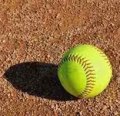
ontheblack - Posts: 2355
- Joined: Sun Aug 02, 2009 2:27 pm
Can you post or point me to an illustration of this?
ontheblack:
Thanks for the response. And for the extremely kind words.
Take a look at the video of Vlad Guerrero that I posted earlier (page 6 on this thread), and the two animations showing shoulder load (page 7 on this thread). One of those animations is "normal," (most hitters) and the other more rare - but much more desirable (performed by elite hitters). Those three videos should show you the load.
The clips of Aaron (page 6 on the thread) and Cochran (I think page 8, but after the animations, anyway) that I posted will show the UNLOAD, as you'll see the hands disappear, moving inside just before contact. That can be accomplished just by pulling the hands in, but great hitters in general, and those two in particular, do it by horizontally pinching the front shoulder blade towards the spine just before contact. An action of the shoulder that affects the hands / bat.
And it is universal to just about all sports. It would be difficult to find a video clip of an MLB pitcher who is NOT pinching the shoulder blade of his throwing arm shoulder blade towards the spine just before he begins the throwing arm rotation.
Best,
Scott
-

ssarge - Posts: 566
- Joined: Tue Jan 01, 2008 6:13 pm
The video of Vlad is a great example.
Do you offer swing analysis via video?
Do you offer swing analysis via video?
-

ontheblack - Posts: 2355
- Joined: Sun Aug 02, 2009 2:27 pm
Scott, I have another question for you since this thread is about hitting tips and myths.
There is a lengthy debate
here about the "push" at or after contact, in Megan Langenfeld's swing.
My DD was taught this as well by a hitting coach who worked with Enquist.
What are your thoughts on this?
There is a lengthy debate
here about the "push" at or after contact, in Megan Langenfeld's swing.
My DD was taught this as well by a hitting coach who worked with Enquist.
What are your thoughts on this?
-

ontheblack - Posts: 2355
- Joined: Sun Aug 02, 2009 2:27 pm






